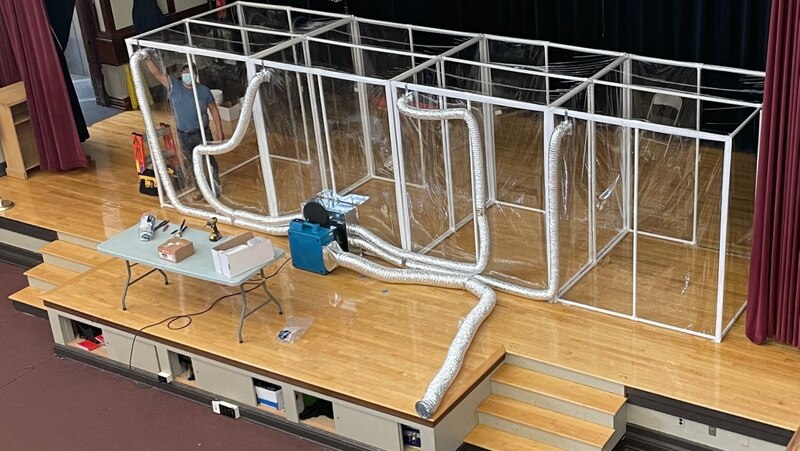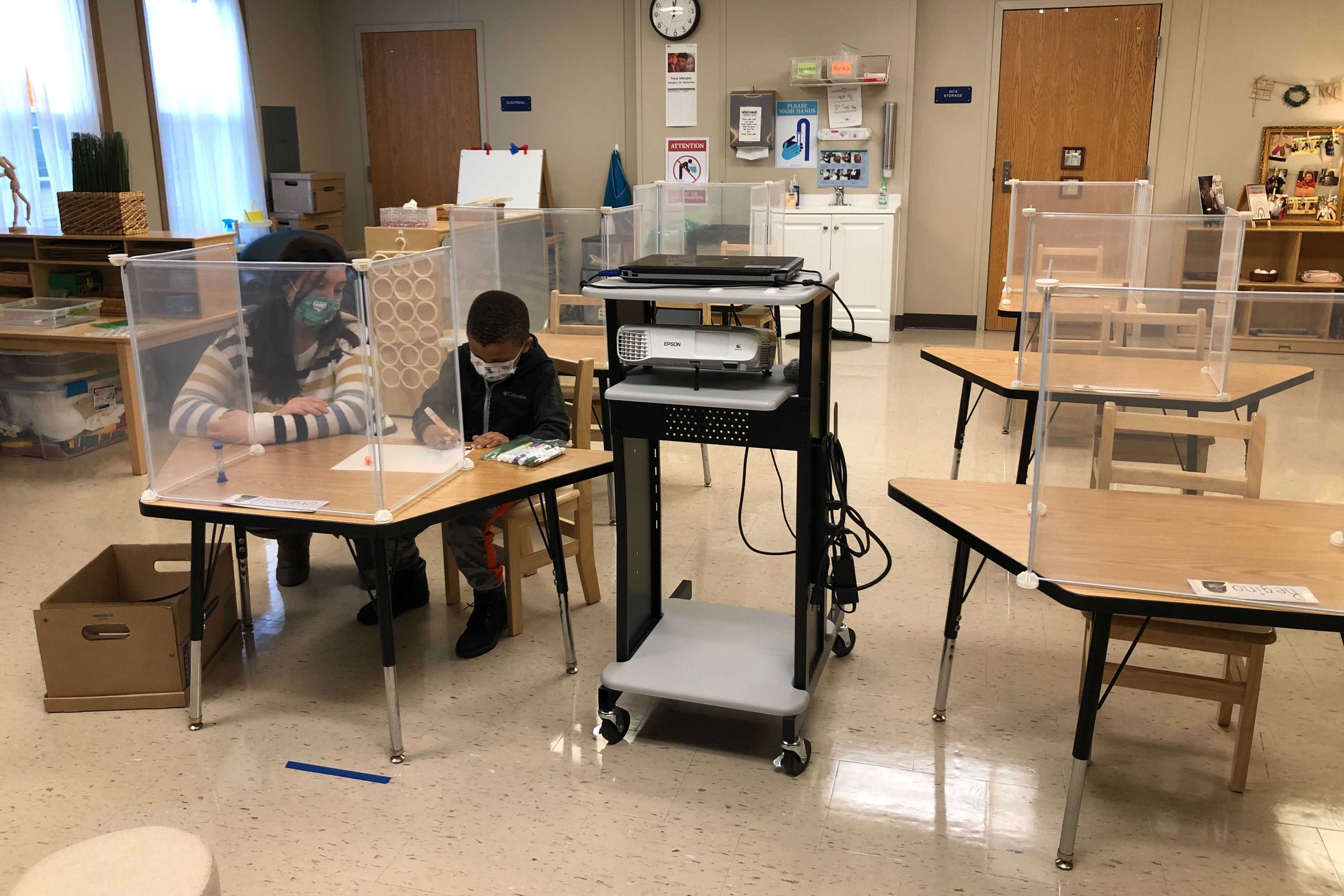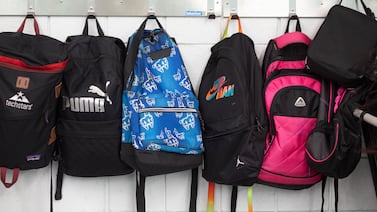A few hours after Chicago Public Schools welcomed students back for the first time since closing last year because of coronavirus, the debate on whether the district should be reopening shifted to City Council.
Monday’s hearing was called by Ald. Michael Scott Jr. (24th), chairman of City Council’s Committee on Education and Child Development, after a letter penned by Ald. Matt Martin (47th) and signed by 36 aldermen raised concerns about the district’s reopening plans.
About 6,000 preschool and special needs students were expected to return to classrooms Monday. Kindergarten through eighth grade students are set to return on Feb. 1. In total, 77,000 of the district’s 355,000 students are expected to return to in-person learning this year.
Scott said the hearing aimed to force CPS officials to answer questions on the reopening plans. But he didn’t invite Chicago Teachers Union members to participate, angering many aldermen, including Ald. Rossana Rodriguez Sanchez (33rd).
“We should be able to hear the contrasting views between what is planned, what is being said, and what is being experienced on the ground,” she said.
For months, Mayor Lori Lightfoot and CPS officials have publicly battled with the Chicago Teachers Union on whether the school’s reopening plan was safe. Scott said he’d provide a separate opportunity for Teachers Union members to rebut district officials at a later date.
Lightfoot and Jackson have argued the district must provide students the option of returning to in-person learning, saying it would prevent students struggling with online learning from falling behind their peers.
But the Teachers Union has argued their members were not given the choice whether to return, the district hasn’t provided teachers a safe environment and that forcing educators to simultaneously teach remotely and those in the classroom will worsen the experience for kids who stay home.
Ald. Susan Sadlowski Garza (10th), who worked as a CPS educator for more than 20 years, said she would not return to the classroom if she still worked for the district.
“What [CPS] says on paper is way different from implementing it in person, that I can say with 100 percent certainty. People are going to get sick, there’s no doubt in my mind,” she said.
Ald. Sophia King (4th), vice chairman of the committee, joined the majority of aldermen in opposing the reopening plans, saying the move disproportionately impacts Black and Brown communities. CPS should instead “work towards a more robust opening in the fall,” she said.
“… Trying to do both remote and in-person will be like … trying to ride two horses with one ass,” King said. “Given that bars, restaurants, parks and even our City Council are closed or remotely operating, given this is a deadly virus, why wouldn’t we wait?”
When CPS decided to abandon its hybrid reopening plan in August, opting to stay fully remote instead, officials cited the city’s rising coronavirus cases. At the time, the 7-day rolling average was 303 daily cases with a 5.1 percent positivity rate.
On Monday, the city had a seven-day rolling average of 1,036 daily cases with a 10.3 percent positivity rate, up from 921 daily cases the previous week. But ahead of this month’s reopening, the city announced it would rely on a new metric: the number of days it takes for cumulative cases of the virus to double.
City health officials have said if cumulative cases are doubling in less than 18 days, the district would reconsider its reopening. On Monday, the doubling rate was at 84.8.
Dr. Marielle Fricchione of the Chicago Department of Public Health told the committee “Chicago is leading” the way by using the new metric rather than a test positivity rate or daily case counts.
Despite the city’s case positivity rate hovering over 10 percent, the city now “has control” over the pandemic, Fricchione said. She praised Lightfoot’s extension of the stay-at-home advisory for 12 days, saying it shows the city is “finally prioritizing our children through this pandemic” by ensuring community mitigation strategies are strong as students return to school.
The district will require students and teachers infected with coronavirus to remain isolated for 14 days before they return to schools and will conduct contact tracing as new cases emerge. The district will not require a negative test before those who contract the virus can return.
“We have picked the most conservative strategies that we possibly can to make sure that this phase-in is as smooth as possible,” Fricchione said.
Asked how teachers can keep themselves safe while in school, Fricchione said teachers are “very good at infection control” because they’ve developed an “innate sense” of when something is dirty or clean based on their experience with children who are often sick.
Beyond cleaning, teachers can prevent spread by ensuring their students wear masks and social distance from others.
Ald. Michael Rodriguez (22nd) said he was “very concerned” about the “care rooms” CPS are planning to isolate children who develop symptoms of the virus.
Sherly Chavarria, CPS’ chief of teaching and learning, said schools were asked to identify two staffers willing to volunteer to monitor the rooms. The volunteer staffers will receive increased compensation, additional training and will be fitted with personalized protective equipment.
The district will also develop a central pool of care room attendants to deploy to schools if either of their two attendants are unavailable.

Ald. Matt O’Shea (19th), who has 12 CPS schools in his Southwest Side ward, supports the reopening plan, saying there will be a loss “that will never be made up” for students who have gone 300 days without returning to school buildings.
Dr. Kenneth Fox, CPS’ chief health officer, agreed. Aldermen shouldn’t be fearful of the district’s reopening plan but should be concerned with the harm to children if classrooms don’t reopen, Fox said.
“There are a billion school children back in school now, that were out in March, but people learned and they did things they were afraid of, they took that chance because they understood the damage that is caused to children by not being in school,” he said.
This story was produced by Block Club Chicago. Block Club is an independent, 501(c)(3), journalist-run newsroom.








